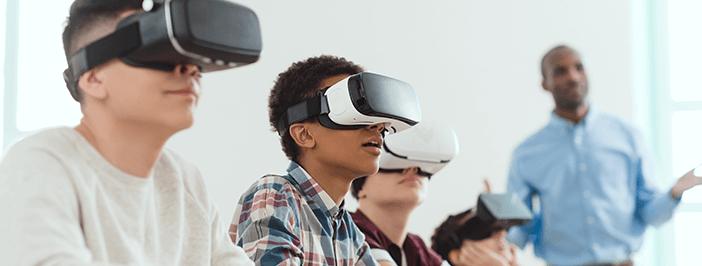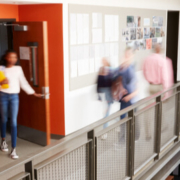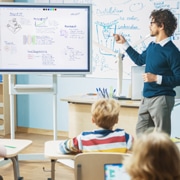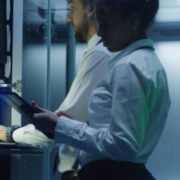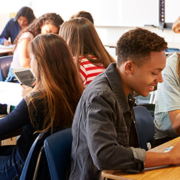Why VR and AR represent the future of education
It wasn’t so long ago that virtual reality and augmented reality were the stuff of science fiction. However, while both concepts have been around for several years already, it’s only recently that VR and AR solutions have become effective, efficient, and — perhaps most importantly — affordable. Modern VR and AR now provide significant benefits across many applications, and they are accessible to the general public in a way they have never been before.
According to figures released in 2021, there were 600 million AR users worldwide in 2020 — up from 440 million the previous year. In 2022, this figure is predicted to break 1 billion, hitting 1.73 billion by 2024. On the VR side, the demand for VR devices will expand 16-fold in only four years from 2018 to 2022. This expansion translates to a combined AR and VR market size of $296.9 billion by 2024.
Benefits of using VR in the classroom
So, we’ve established that these technologies are growing rapidly, but how does this relate to education? Why should schools deploy VR and AR-based learning in the classroom?
Enhanced attention and engagement
The idea of lecturing school-age kids has become somewhat old-fashioned. Instead, modern educational methods are focused on developing a more enriching learning experience for children — grabbing their attention and fostering genuine engagement.
On a basic level, VR achieves this simply by adding diversity. With more variation in their learning schedule, students are more likely to stay engaged. However, VR goes further than this, immersing students in a highly effective virtual environment that will hold their attention.
Clearer paths towards student learning outcomes
Effective education needs structure and direction. Students need to achieve clearly-defined learning objectives and outcomes, gathering the knowledge they need to progress through the education system.
The beauty of AR and VR in the classroom is that these environments can be pre-programmed and designed ahead of time. This means students can enjoy playful experimentation while still working towards pre-determined learning outcomes.
Knowledge retention increases
Students need to be able to consume knowledge, but they also need to retain it effectively. Studies have found that VR and AR actively improve knowledge retention, making it easier for the human brain to remember new data.
Students learn by first-hand experience, instead of learning passively
It’s always better for students to get involved, try things for themselves, witness concepts in action, and enjoy active learning. However, it’s challenging to achieve this when reading textbooks and listening to lectures from teachers and instructors. So, while these more passive forms of learning will still play a role, more active structures will be needed to support them.
VR and AR allow students to “learn by doing” instead of “learning by reading.” This learning method does not replace textbooks and other types of knowledge delivery but rather enhances them.
VR is the future of learning, and the right partner is critical
You need the right tech partner to get the best from VR and AR in the classroom. TFE has partnered with ClassVR, bringing virtual reality learning to schools and ensuring the proper implementation and management of the solution. Reach out to the TFE team today and discover how VR solutions are changing our approach to education.

